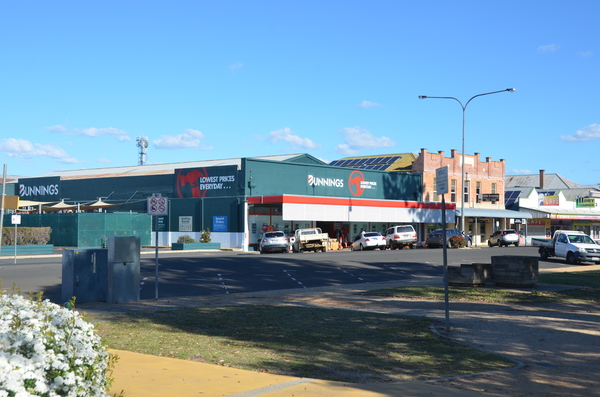By Jeremy Sollars
A DECISION on the controversial new Bunnings site for Warwick is expected at next month’s Southern Downs Regional Council meeting.
Public submissions on the plan for a new Bunnings on the flood plain at the corner of Canning and Condamine streets near Warwick East State School closed on 16 September.
The Free Times asked the council how many submissions had been received but a spokeswoman said that detail would form part of the report to councillors ahead of the October meeting.
It is understood, however, that at least a dozen business and property owners in the vicinity of the site have lodged objections, with at least one engaging a professional planning consultant from Brisbane to put their submission together.
The council commissioned engineering consultants Jacobs Australia to prepare a flood impact assessment for the site, the report on which was presented to the council in March.
The report is based on the standard national flooding model which assumes the highest flood level ever recorded in Warwick has a 1 per cent chance of being exceeded in any given year, similar to the old “one in 100 year” flood scenario.
While this is nationally accepted as the base model to calculate flood flows for specific locations, hydrological engineers warn it can encourage the notion that if such a flood were to occur communities are then safe for another 100 years.
The Jacobs Report does not include any assessment of an extreme flood event, such as January 2011 in Warwick where the Condamine and adjoining Rosenthal, Swan, Farm and Emu Creek catchments filled rapidly over a short time, or the highest recorded flood for Warwick in 1976.
Leading authorities – including the Office of the Queensland Chief Scientist – advise councils and other agencies to consider a higher standard than the 1 per cent “exceedance”.
“Currently nearly everywhere in Australia the 1 per cent AEP event, or ‘one in 100 year flood’, with an appropriate additional height for buildings, is designated as having an ‘acceptable’ risk for planning purposes, regardless of the potential consequences of the flood,” the Chief Scientist’s advice reads.
“There are often strong social and economic reasons for considering a higher standard than the 1 per cent AEP flood.
“For example, in some locations flood levels associated with rarer floods are significantly higher and are likely to cause significant devastation.
“Inundation of a particular location may have significant economic and social consequences for a much wider region.”
It’s not the first time that Bunnings has run into trouble over building in a flood zone.
In April last year the Bunnings outlet in Maitland in the New South Wales Lower Hunter Valley was forced to shut down for months after a ‘superstorm’ deluge caused fill around drainage pipes to erode and a large section of the warehouse floor to crack.
The store was built with a substantial amount of fill on a naturally low-lying site formerly occupied by the Maitland saleyards.
Maitland Mayor Peter Blackmore said at the time that the warehouse site had been developed “according to conditions laid down by the council and other government departments”.
He acknowledged to local media that the site was “low lying in its natural state” with a permanent lagoon at its bottom end.
But Cr Blackmore said the amount of rain which fell on Maitland during the storm was “much more than a one in 100 year” scenario.
The Maitland Bunnings was re-opened late last year after extensive engineering treatments.







